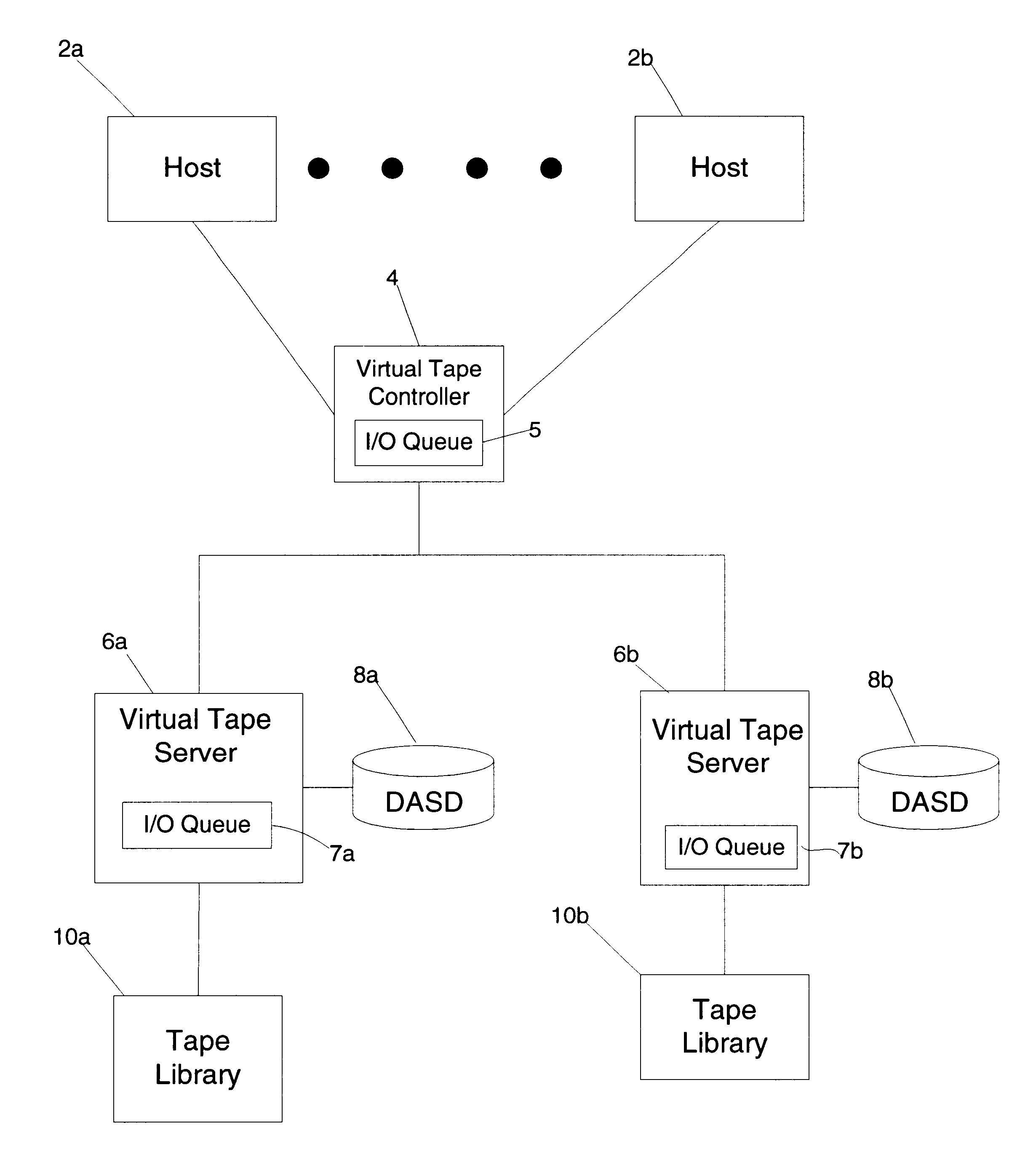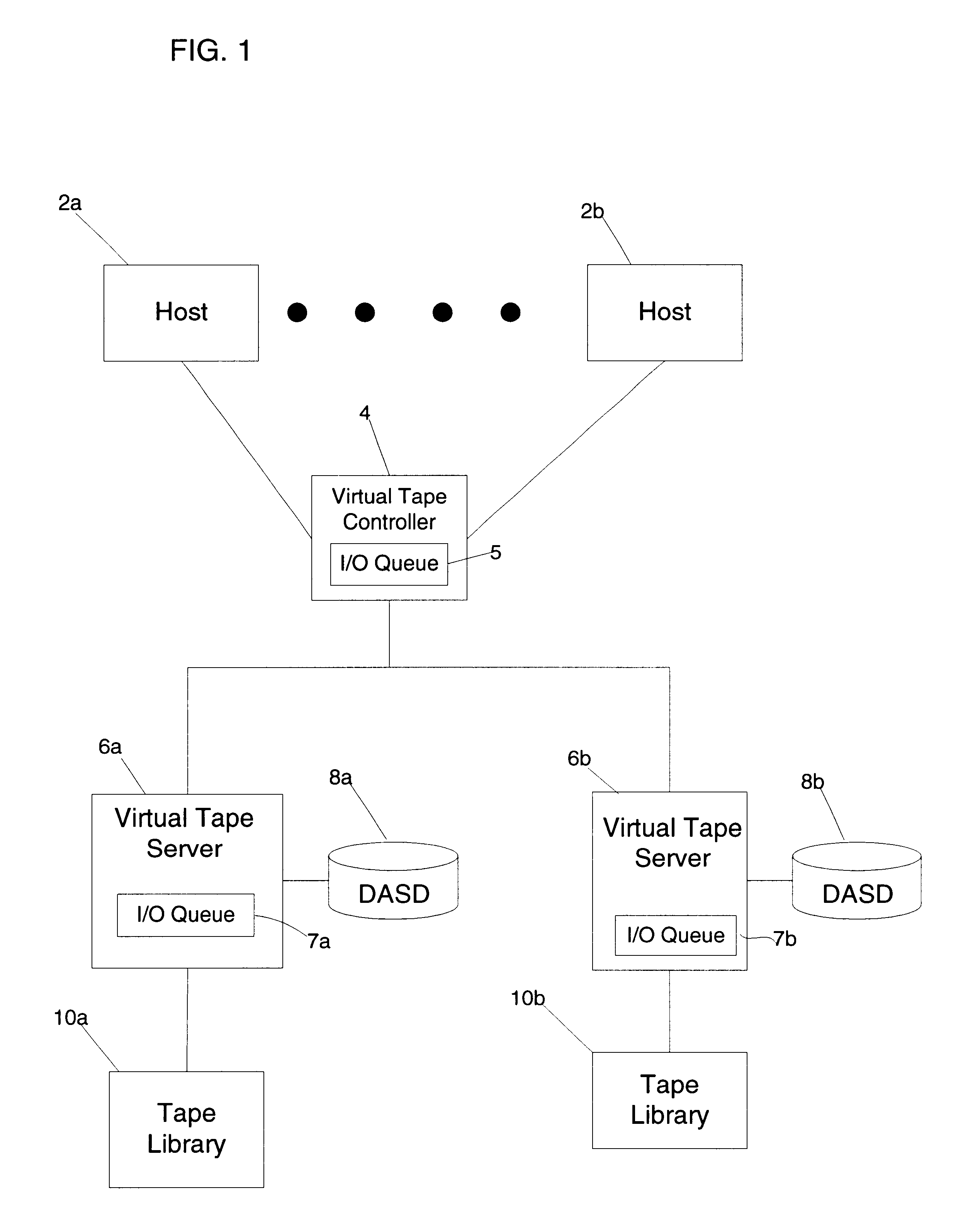Method, system, and program for transferring data between storage devices
a data transfer and storage device technology, applied in data processing applications, instruments, data conversion, etc., can solve the problems of large delay in the copy process and the inability of the copy process to "catch-up" to the hos
- Summary
- Abstract
- Description
- Claims
- Application Information
AI Technical Summary
Benefits of technology
Problems solved by technology
Method used
Image
Examples
Embodiment Construction
Provided is a method, system, and an article of manufacture for maintaining data accessible by a host in two storage devices, wherein the data is comprised of a plurality of data sets. A determination is made of a percentage of uncopied data at the first storage device, wherein uncopied data comprises data sets to be copied from the first storage device to the second storage device. If the calculated percentage is greater than a threshold amount, a rate at which uncopied data sets are transferred from the first storage device to the second storage device is increased.
In further implementations, the threshold amount is a first threshold amount. If the calculated percentage is greater than a second threshold amount, further increasing a rate at which uncopied data sets are transferred from the first storage device to the second storage device.
Still further, the rate at which uncopied data sets are transferred is increased by increasing a priority associated with the uncopied data sets...
PUM
 Login to View More
Login to View More Abstract
Description
Claims
Application Information
 Login to View More
Login to View More - R&D
- Intellectual Property
- Life Sciences
- Materials
- Tech Scout
- Unparalleled Data Quality
- Higher Quality Content
- 60% Fewer Hallucinations
Browse by: Latest US Patents, China's latest patents, Technical Efficacy Thesaurus, Application Domain, Technology Topic, Popular Technical Reports.
© 2025 PatSnap. All rights reserved.Legal|Privacy policy|Modern Slavery Act Transparency Statement|Sitemap|About US| Contact US: help@patsnap.com



